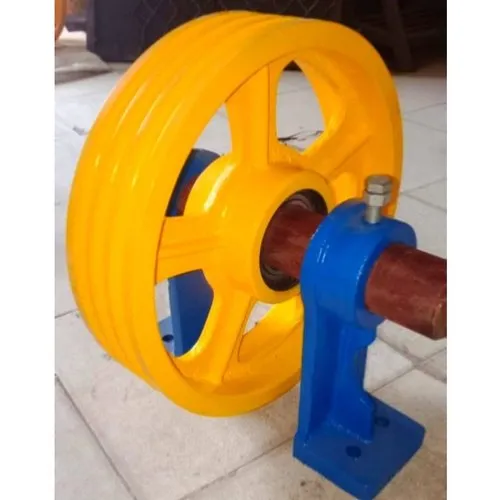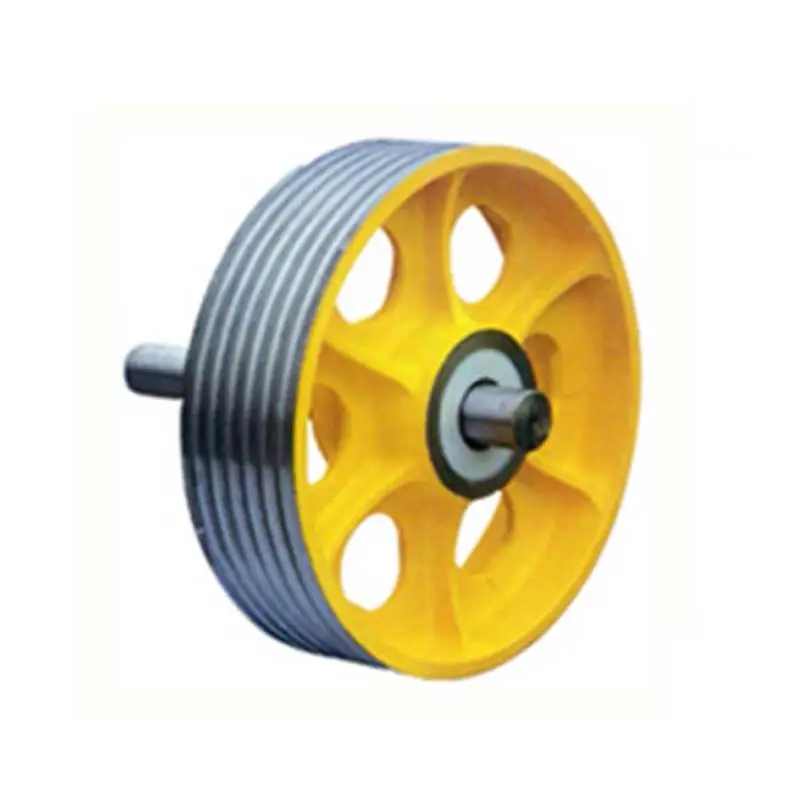Product Description
Stainless Steel SS304 Hardware Rigging wire rope rolling bearing block pulley
| Item | Wire Rope Pulley |
| Model | Single Pulley, Double Pulley |
| Size | M15-M100 |
| Material | Stainless Steel 304/316, Carbon Steel |
| Standard | DIN, ASME, BS, JIS, AS, EN, GB for option |
| Grade | A2-70, A4-80, 4.8/8.8 |
| Finish | Plain, Passivation, Polishing, Galvanized, Zinc Plated, Hot-dip Galvanized |
| Delivery Time | 3-15 days |
| OEM | Available |
Q: What’s your product range?
A: Our product cover Bolts, Screws, Nuts, Washers, Spring ,Rivet, Anchor, Pulley, Rigging and so on.
Q: How long is your delivery time?
A: 3 days for stock items,7-15 days for production.
Q: How do you control your quality.
A: QC on-line inspection and final inspection before delivery. 6S management. MTC and Quality Report can be provide.
Q: Could you provide free samples?
A: Yes, we could offer free samples for the items in stock, just need to pay shipping cost, it can be refunded to your orders.
Q: Do you accept small order?
A: Sure, we can accept small orders if we have stock of the specification which you need..
Q: What is your packing ?
A: 20-25kg for 1 carton,36 or 48 cartons for 1 pallet. One pallets is about 900-960kg. Customized carton and Customer’s logo is available.
Q: What is your payment term?
A: We can accept T/T, L/C for bulk order. Paypal and Western Union for small order or sample order.
Made-in-China Online payment is available.
Q: Do you accept customized order?
A: Yes, we can produce according to sample or drawing.
| Warranty: | 1 Year |
|---|---|
| Type: | Wire Rope Pulley |
| Material: | Stainless Steel/Carbon Steel |
| Number of sheaves: | Single Pulley, Double Pulley |
| Control: | Manual |
| Color: | Silver |
| Samples: |
US$ 0/Piece
1 Piece(Min.Order) | |
|---|
| Customization: |
Available
| Customized Request |
|---|
Can lifting pulleys be upgraded or retrofitted into existing lifting systems?
Yes, lifting pulleys can be upgraded or retrofitted into existing lifting systems to improve their performance, efficiency, and safety. Upgrading or retrofitting lifting pulleys offers several benefits and allows for the integration of new technology and advancements. Here’s a closer look at the process and advantages:
1. Assessment of Existing System: Before considering an upgrade or retrofit, it is important to assess the existing lifting system. Evaluate the condition of the pulleys, cables, ropes, and other components. Determine if any components are outdated, worn, or no longer meet the requirements of the lifting operation.
2. Identifying Improvement Opportunities: Identify the areas where the lifting system can be improved. This can include enhancing load capacity, increasing efficiency, improving load control, reducing maintenance requirements, or enhancing safety features.
3. Consulting with Experts: Seek advice from lifting equipment specialists or engineers who have expertise in upgrading or retrofitting lifting systems. They can provide valuable insights and recommendations based on their knowledge and experience.
4. Selection of Upgraded Pulleys: Select lifting pulleys that align with the specific requirements and improvement goals of the existing lifting system. Consider factors such as load capacity, efficiency, load control features, durability, and compatibility with the existing system.
5. Installation and Integration: Install the upgraded pulleys into the existing lifting system. Ensure that the installation is carried out by qualified personnel following the manufacturer’s guidelines and safety procedures. Integrate the new pulleys seamlessly with the existing components, such as cables, ropes, and attachments.
6. Testing and Performance Evaluation: Conduct thorough testing and performance evaluation of the upgraded lifting system. Verify that the new pulleys meet the desired improvements in terms of load capacity, efficiency, load control, and safety. Address any issues or adjustments that may arise during the testing phase.
7. Training and Familiarization: Provide training to operators and maintenance personnel on the proper usage, maintenance, and safety precautions related to the upgraded lifting pulleys. Ensure that they are familiar with any new features or functionalities introduced by the upgrade.
8. Maintenance and Regular Inspection: Establish a maintenance schedule for the upgraded lifting pulleys and associated components. Regularly inspect and maintain the pulleys to ensure their optimal performance and longevity. Follow the manufacturer’s recommended maintenance procedures.
By upgrading or retrofitting lifting pulleys into existing lifting systems, organizations can leverage the benefits of modern technology and advancements without the need for a complete system overhaul. This approach enhances the efficiency, performance, and safety of the lifting operations, ultimately improving productivity and extending the lifespan of the lifting system.
How are lifting pulleys customized for specific lifting requirements and load capacities?
Lifting pulleys can be customized to meet specific lifting requirements and accommodate different load capacities. Manufacturers offer various customization options to ensure that the pulleys are tailored to the specific needs of the lifting application. Here are some common ways in which lifting pulleys are customized:
1. Load Capacity: Lifting pulleys are designed and manufactured to handle different load capacities. Manufacturers specify the maximum load capacity of each pulley, allowing users to select the appropriate pulley based on their specific lifting requirements. Pulleys can be customized to support light loads, heavy loads, or even extreme loads encountered in specialized lifting applications.
2. Sheave Size and Configuration: The sheave, or the wheel of the pulley, can be customized in terms of size and configuration. Larger sheave diameters provide a greater mechanical advantage, allowing for easier lifting of heavy loads. Manufacturers offer pulleys with different sheave sizes and configurations, such as single sheave, double sheave, or multiple sheaves in a block, to accommodate various lifting needs.
3. Material Selection: The choice of material for the pulley can be customized based on factors such as load capacity, environmental conditions, and industry requirements. Different materials, such as steel, cast iron, aluminum, brass, nylon, plastic, or composite materials, offer varying properties in terms of strength, durability, weight, corrosion resistance, and more. Manufacturers select the appropriate material or combination of materials to ensure that the pulley meets the desired specifications.
4. Bearing Type: Lifting pulleys can be customized with different bearing types to optimize performance and efficiency. Common bearing options include plain bearings, ball bearings, or roller bearings. The choice of bearing type depends on factors such as load capacity, speed, noise requirements, and maintenance considerations. Customizing the bearing type allows for smoother rotation of the pulley, reducing friction and improving overall lifting performance.
5. Mounting Options: Lifting pulleys can be customized with various mounting options to suit different installation requirements. Manufacturers offer pulleys with different mounting configurations, such as fixed mount, swivel mount, or combination mounts, allowing users to select the most suitable option for their specific lifting setup.
6. Special Features: Depending on the specific lifting requirements, lifting pulleys can be customized with special features or accessories. For example, pulleys used in high-temperature environments may have heat-resistant coatings or materials. Pulleys used in corrosive environments may have protective coatings or be made from corrosion-resistant materials. Manufacturers can also incorporate features such as locking mechanisms, integrated lubrication systems, or specialized designs to address unique lifting challenges.
By offering customization options in load capacity, sheave size and configuration, material selection, bearing type, mounting options, and special features, manufacturers ensure that lifting pulleys can be adapted to specific lifting requirements and load capacities. This customization allows users to optimize the performance, efficiency, and safety of their lifting operations.
What is a lifting pulley, and how is it used in various lifting applications?
A lifting pulley is a mechanical device used to change the direction of a lifting force and facilitate the lifting or lowering of heavy objects. It consists of a grooved wheel or sheave that rotates on an axle and is typically mounted on a frame or housing. Here’s an explanation of how lifting pulleys are used in various lifting applications:
1. Block and Tackle Systems: Lifting pulleys are commonly used in block and tackle systems, which utilize multiple pulleys to create a mechanical advantage. By arranging the pulleys in a specific configuration, such as a fixed pulley and a movable pulley, block and tackle systems allow users to lift heavy loads with less effort. Lifting pulleys in block and tackle systems distribute the load across multiple ropes, reducing the force required to lift the load.
2. Crane and Hoist Systems: Lifting pulleys are integral components of cranes and hoists used in construction, manufacturing, and other industries. In these systems, the pulleys are part of the lifting mechanism and are responsible for raising and lowering heavy loads. The pulleys in crane and hoist systems provide the necessary mechanical advantage to lift heavy objects safely and efficiently.
3. Elevator Systems: Elevators rely on lifting pulleys to move the elevator car up and down. The pulleys, along with the elevator cables or ropes, form the traction system that lifts and lowers the car. The pulleys in elevator systems ensure smooth and controlled movement while distributing the load evenly across the cables, allowing for safe transportation of passengers or goods.
4. Rigging and Rigging Gear: Lifting pulleys are often used in rigging applications, such as in the construction or entertainment industry. They are employed to redirect the lifting force, change the direction of the load, or create lifting configurations suitable for specific tasks. Lifting pulleys used in rigging applications are designed to withstand heavy loads and provide reliable lifting capabilities.
5. Material Handling Equipment: Lifting pulleys are utilized in various material handling equipment, including winches, come-alongs, and manual chain hoists. These devices incorporate pulleys to facilitate the lifting and transportation of heavy objects. Lifting pulleys in material handling equipment enable operators to apply force in the desired direction, making it easier to handle and move heavy loads.
6. Sailing and Boating: Lifting pulleys, also known as blocks, are extensively used in sailing and boating applications. They are employed to control and adjust the tension in ropes and lines, such as halyards and sheets. Lifting pulleys in sailing and boating enhance the efficiency of sail handling, allowing sailors to hoist, lower, and trim sails with ease.
Lifting pulleys are versatile devices that find application in a wide range of lifting scenarios. Whether in block and tackle systems, crane and hoist systems, elevator systems, rigging, material handling equipment, or sailing and boating, lifting pulleys play a crucial role in facilitating safe and efficient lifting operations.
editor by CX
2023-11-28




